Witness One of the Most Touching and Powerful Safari Moments on Earth
Every year, deep in the southern plains of the Serengeti, something magical happens. Thousands of wildebeest calves are born within just a few short weeks, flooding the landscape with life, hope, and the delicate balance of survival.
This is the Wildebeest Calving Season, a breathtaking part of the Great Migration, and one of the most emotionally powerful experiences you can witness on a Tanzania safari.
But what exactly is the calving season? When does it happen? Where should you go to see it? And why is this time so special?
Let’s dive into everything you need to know.
What is Wildebeest Calving Season?
The Wildebeest Calving Season is the period during the Great Migration when more than 500,000 wildebeest calves are born, mostly between late January and early March. It’s a natural phenomenon that takes place in the Ndutu region—a vast and nutrient-rich area that stretches across the southern Serengeti and northern Ngorongoro Conservation Area in Tanzania.
Each day, around 8,000 baby wildebeests are born, making it one of the most concentrated birthing events in the wild anywhere on Earth.
Where Does Calving Take Place?
The action is centered in the Ndutu Plains, a region that offers lush grasses, open vistas, and short travel distances, perfect for newborn calves.
-
Ndutu (Southern Serengeti)
-
Ngorongoro Conservation Area
-
Lake Ndutu & Lake Masek area
These areas not only offer prime wildlife viewing, but also fewer crowds compared to central Serengeti and easier access from Arusha.
When Is the Wildebeest Calving Season?
The peak of wildebeest calving usually happens between mid-January and early March. Here’s a quick breakdown:
| Month | Wildlife Activity |
|---|---|
| January | Herds settle in Ndutu, first calves are born |
| February | Peak calving season – thousands born daily |
| March | Calves grow strong, predators increase activity |
Note: The timing may shift slightly due to rainfall and grazing conditions.
Why Is It So Dramatic?
Wildebeest calving isn’t just cute—it’s raw, real, and intense.
1. The Circle of Life
The plains are dotted with newborns learning to stand, walk, and run—often just minutes after birth. But with so many vulnerable animals, predators are never far away.
Expect to see cheetahs, lions, hyenas, jackals, and even eagles waiting for a chance to strike.
2. Incredible Predator Action
If you’re looking for predator-prey interaction, this is the best time of year to witness it. Cheetahs chase baby wildebeests, lionesses prowl silently, and hyenas coordinate like packs of wolves.
3. Heartwarming Moments
Watching a mother wildebeest lick her newborn clean, shield it from danger, or nudge it to its feet for the first time is an emotional, unforgettable experience.
Why Photographers and Filmmakers Love Calving Season
-
Golden light + dramatic skies = perfect shots
-
High density of animals = endless compositions
-
Unique behaviors: birthing, bonding, chasing, learning
-
Predator scenes that tell powerful stories
It’s no wonder Nat Geo, BBC Earth, and countless wildlife photographers choose Ndutu for their best work.
Is It Good for Families or First-Timers?
Surprisingly, yes—if done with the right guide and pacing.
-
Shorter game drives (unlike northern migration safaris)
-
Concentrated sightings = less driving, more action
-
Luxury and mid-range lodges with family options available
-
Ideal for February travel during school breaks or Valentine’s season
Best Places to Stay During Calving Season
Here are some top lodges and tented camps near Ndutu:
-
Ndutu Safari Lodge – iconic, cozy, great guides
-
Lake Masek Tented Camp – eco-luxury, scenic views
-
Serengeti Migration Camp (mobile) – follows herds closely
-
Kubu Kubu Tented Lodge – good for families or groups
Choose a mobile camp for maximum flexibility, or a permanent lodge for added comfort.
Why Calving Season Is a Hidden Gem
While most tourists flock to the Serengeti for the river crossings in July–September, the Wildebeest Calving Season offers something deeper—a connection to the beginning of life itself.
It’s intimate, emotional, dramatic, and surprisingly accessible. Whether you’re a wildlife lover, family traveler, photographer, or safari first-timer, witnessing calving season will change how you see nature forever.
Ready to Plan Your Wildebeest Calving Safari?
Let our team at Travel Booking Guide or Heart of Serengeti help you plan the perfect itinerary for Wildebeest Calving Season. From private guides and custom routes to affordable mid-range or luxury lodges, we’ll make sure you’re in the right place at the right time.



